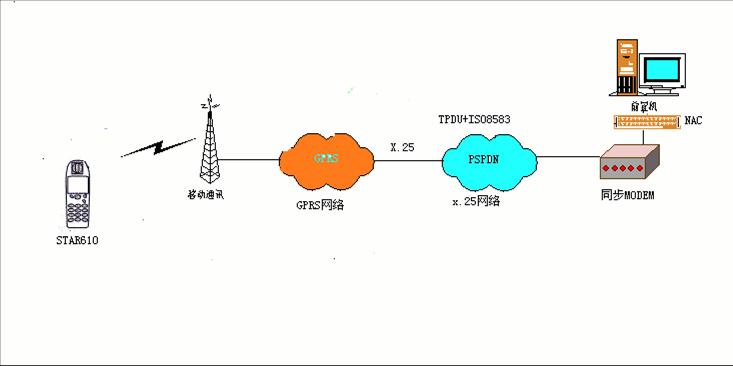GPRS is an important step for GSM to move towards 3G. According to the recommendations of the European Telecommunications Standards Institute (ETSI) for GPRS development, it is divided into two stages of development. The first stage can provide users with e-mail, Internet browsing and other data. The second phase is GPRS for enhanced data rate for GSM Evolution (EDGE), abbreviated as E-GPRS.
(1) Standard formulation of ETSI
In 1993, Europe first proposed the opening of GPRS service on the GSM network. In 1997, the standardization work of GPRS made significant progress. In October, ETSI released the GSM 02.60 GPRS Phasel service description. By the end of 1999, it completed GPRS Phase2. At present, nearly 100 operators around the world have opened GPRS commercial systems, trial commercial systems or experimental systems. Well-known British BT Cellnet, Germany's T-Mobile, Hong Kong's Smar Tone, Taiwan's TSL and France, Spain, Portugal, Finland, Czech Republic, Denmark, Belgium, Italy, Russia, Australia, Singapore, Philippines, etc. Operators in many countries and regions. 
(2) Development trend of domestic GPRS
China began tracking research on GPRS related standards in 1996, focusing on organizing and conducting a series of GPRS related standards. In April 2000, the "900/1800MHz TDMA Digital Cellular Mobile Telecommunication Network GPRS Tunneling Protocol (GTP) Specification" was completed. The pre-research results of the "GPRS Service Research" proposed by the Ministry of Information Industry's telecommunications transmission were proposed. Beginning in 1998, Chinese operators began brewing work on a pilot network to build GPRS in China. In 2000 and in the first half of 2001, a series of standards related to general packet radio services for 900/1800 MHz TDMA cellular mobile communication networks have been promulgated. On December 21, 2000, China Mobile Communications Corporation announced in Beijing that it was officially launching the GPRS network construction. In June 2001, the first phase of China Mobile's GPRS project was completed. As an important milestone for the third-generation personal mobile communications system, China Mobile Communications Corporation officially launched the GPRS commercial network phase in 2002.
Technical advantages of GPRS 
(1) High resource utilization
GPRS introduced the packet-switched transmission mode, which caused a fundamental change in the original GSM data transmission mode using circuit-switched mode, which is particularly important in the case of scarce wireless resources. According to the circuit-switched mode, the user will occupy the wireless channel alone regardless of whether or not the data is transmitted during the entire connection period. For the packet switching mode, the user only occupies resources during sending or receiving data, which means that multiple corpses can efficiently share the same wireless channel, thereby improving resource utilization. The charging of GPRS users is mainly based on the amount of data communicated, which reflects the principle of “how much to get, how much to payâ€. In fact, GPRS users may connect for several hours, but they only pay a relatively low connection fee.
(2) High transmission rate
GPRS can provide up to 11 SKbit/s transfer rate (up to 1'71.2Kbit/s). This means that through a portable computer, GPRS users can browse the Internet as quickly as Integrated Services Digital Net (or ISDN) users, while also making it possible for mobile multimedia applications that are sensitive to transmission rates.
(3) Short access time
The packet switching access time is reduced to less than Is, which can provide fast and instant connection, which can greatly improve the efficiency of some services (such as credit card verification, remote monitoring, etc.), and can make existing Internet applications (such as E-mail, Web browsing, etc.) The operation is more convenient and smoother.
(4) Supports IP and X.25 protocols
GPRS supports the most widely used IP and X.25 protocols on the Internet. And because of the wide coverage of GSM networks, GPRS can provide global wireless access to the Internet and other packet networks.
Explosion Proof Temperature Sensor
The model of explosion-proof temperature sensor is wzpk-22i-b, which is made of stainless steel and has explosion-proof performance. If you want to conduct reliable temperature measurement, you first need to select the correct temperature instrument, that is, the temperature sensor. Thermocouple, thermistor, platinum resistance (RTD) and temperature IC are the most commonly used temperature sensors in testing.
The changes of physical parameters with temperature include expansion, resistance, capacitance, electromotive force, magnetic properties, frequency, optical characteristics, thermal noise and so on. With the development of production, new temperature sensors will continue to emerge.
Explosion Proof Temperature Sensor,Temperature Pressure Sensor,Explosion Proof Pressure Sensor,New High Temperature Pressure Sensor
Taizhou Jiabo Instrument Technology Co., Ltd. , https://www.taizhoujiabo.com